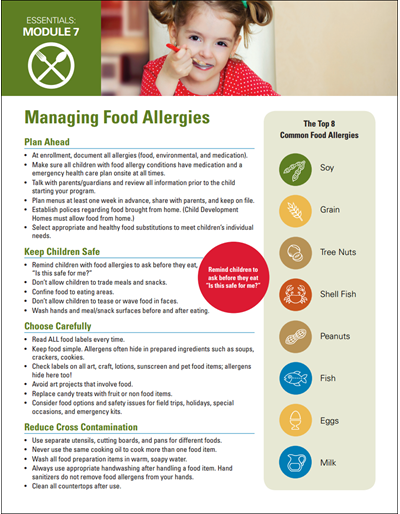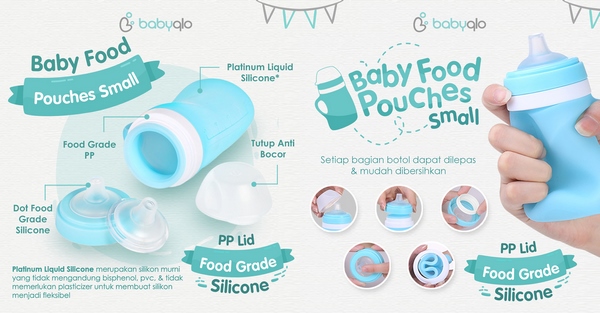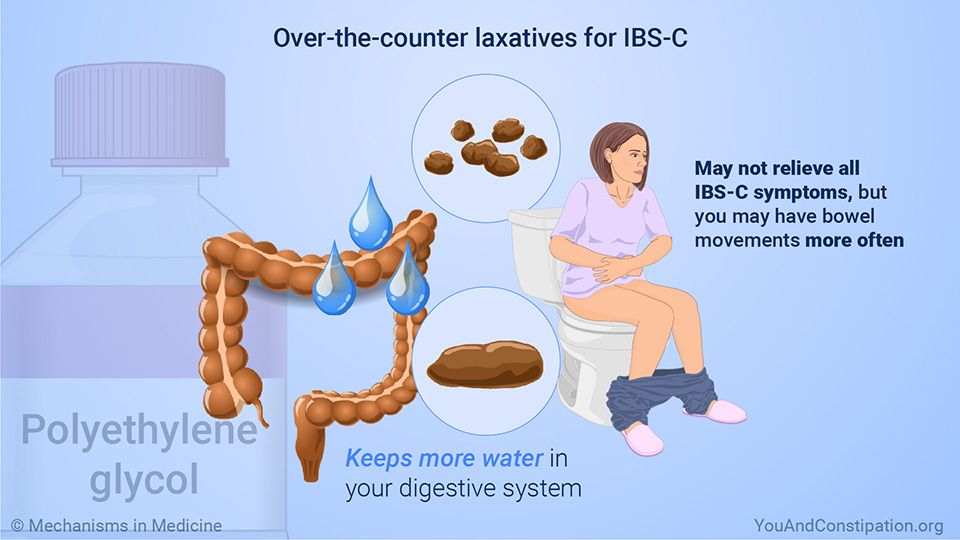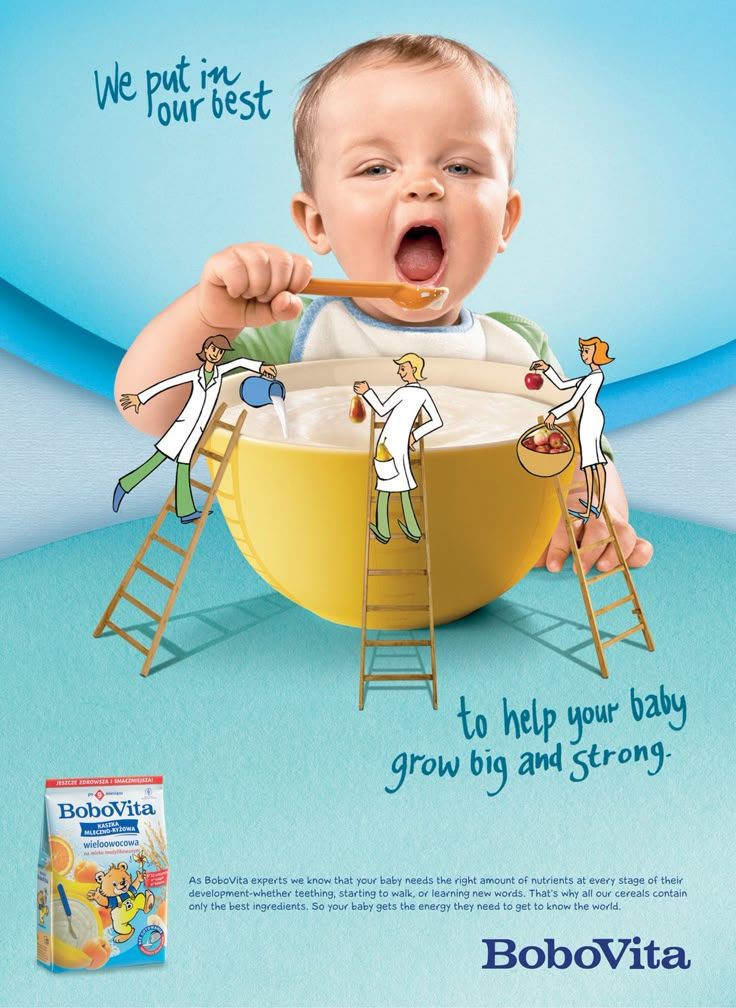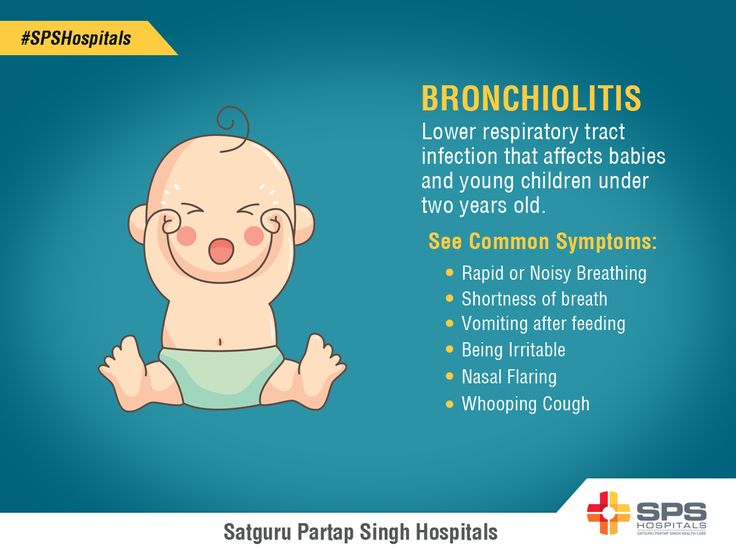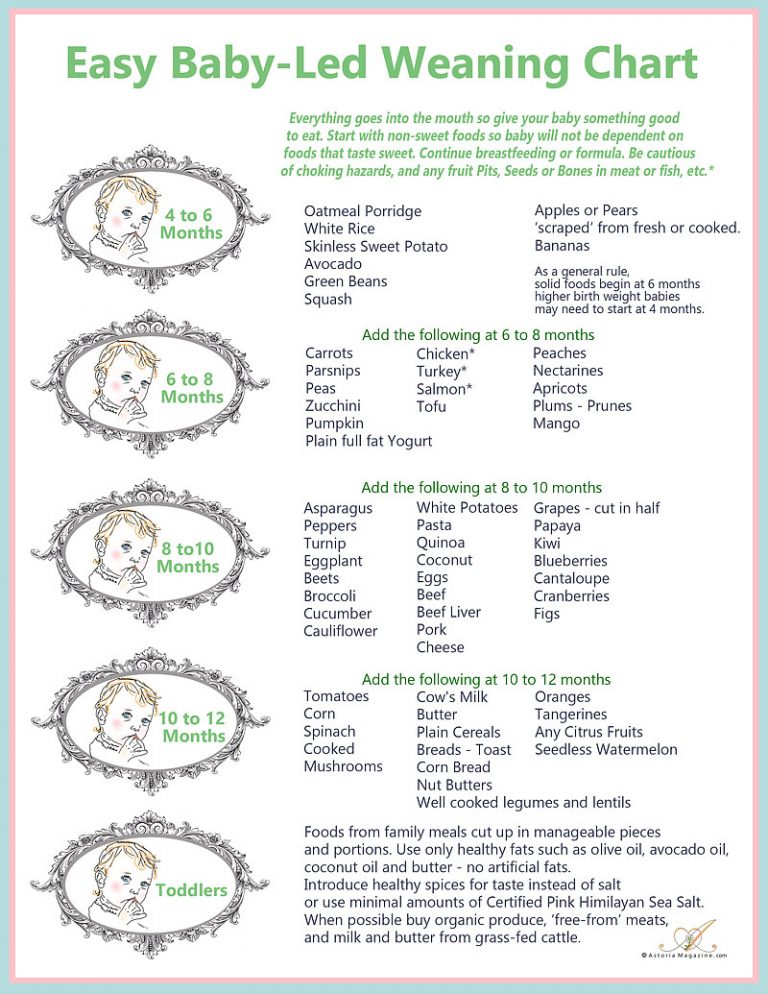Allergic reactions to food for babies
Baby Food Allergies: Identifying and Preventing Them
Written by Gina Shaw
In this Article
- Start Gradually to Identify Any Food Allergies
- Babies and Allergies: The Top 8 Allergenic Foods
- Food Allergy Symptoms to Watch for in Your Baby
- Severe Food Allergy Symptoms: When to Call 911
- Dealing With Mild Food Allergies in Baby
- The Family Food-Allergy Connection
- Protecting Baby Against Food Allergies: Easy Does It
Starting to feed a baby solid foods is an exciting milestone for parents. However, it comes with a lot of questions and concerns, especially about food allergies. What foods are most likely to cause allergies in babies? How do you avoid them?
Emerging research has shown that introducing multiple foods together is safe, and may help the immune system have a lower risk of developing food allergies, but more studies are needed. Check with your doctor for what’s best for your baby.
Start Gradually to Identify Any Food Allergies
It’s most important to introduce a baby to new foods gradually, one at a time, in case of food allergies. If not, a parent may have trouble tying an allergy to a specific new food. For example, if you give your baby three new foods over the course of a day and they develop an allergic reaction, you won’t know which of the foods provoked it.
The type of food or the order in which food is introduced is not much of a concern, as long as the foods you are offering are healthy and well-balanced for the baby. Each time you offer a new food, you should wait three to five days before adding another new item to the menu. Don’t eliminate the other foods your baby is eating during that time; you already know these are safe because the child has not had any food reactions up until now. Just don’t add anything else new.
Babies and Allergies: The Top 8 Allergenic Foods
With any new food, you’ll want to be on the lookout for any allergic reactions.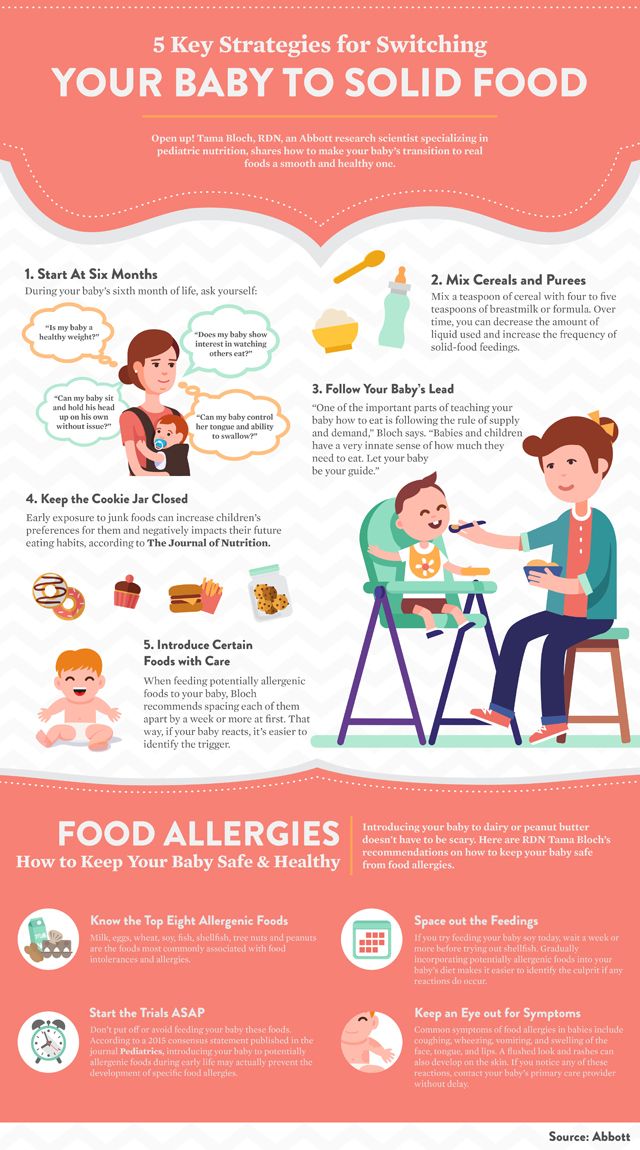 There are more than 160 allergenic foods; certain foods may be more allergenic than others. The following eight foods and food groups are known to possibly cause problems with allergic reactions possibly up to 90% of the time.
There are more than 160 allergenic foods; certain foods may be more allergenic than others. The following eight foods and food groups are known to possibly cause problems with allergic reactions possibly up to 90% of the time.
- Cow's milk
- Eggs
- Peanuts
- Tree nuts (such as walnuts or almonds)
- Fish
- Shellfish
- Soy
- Wheat
New nutrition guidelines from the American Academy of Pediatrics say it's okay to introduce these allergy-causing foods when your baby is ready to eat solids. There is no evidence that waiting until the baby is older prevents food allergy. If you believe your baby has an allergic reaction to a food, such as diarrhea, rash, or vomiting, talk with your child's doctor about the best choices for the diet.
Within a few months of starting solid foods, your baby's daily diet should include a variety of foods, such as breast milk, formula, or both; meats; cereal; vegetables; fruits; eggs; and fish.
Food Allergy Symptoms to Watch for in Your Baby
Food allergy symptoms usually appear very soon after the food is eaten -- within a few minutes to a couple of hours.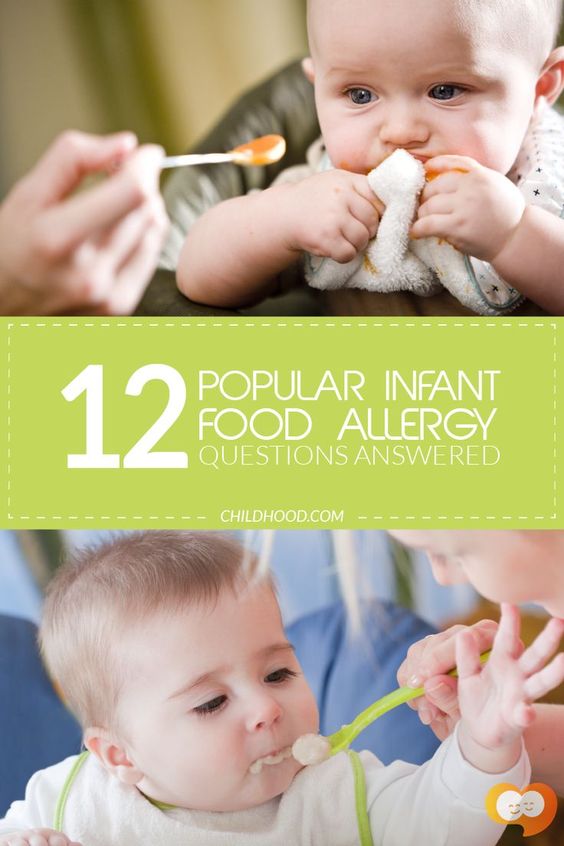 If you’re introducing a new food to your baby, keep an eye out for these symptoms:
If you’re introducing a new food to your baby, keep an eye out for these symptoms:
- Hives or welts
- Flushed skin or rash
- Face, tongue, or lip swelling
- Vomiting and/or diarrhea
- Coughing or wheezing
- Difficulty breathing
- Loss of consciousness
Severe Food Allergy Symptoms: When to Call 911
Severe allergic reactions can be fatal very quickly. If your baby is having trouble breathing/wheezing, has swelling on their face/lips, or develops severe vomiting or diarrhea after eating, immediately call 911. You can inform your pediatrician at a later time.
Dealing With Mild Food Allergies in Baby
If you see mild symptoms, such as hives or a rash, contact your pediatrician for further evaluation. The doctor might refer you to an allergist (allergy specialist doctor), who will ask more questions and do a physical exam. The allergies may order diagnostic tests such as:
- A skin test. This test involves placing liquid extracts of food allergens on your child's forearm or back, pricking the skin, and waiting to see if reddish raised spots form within 15 minutes.
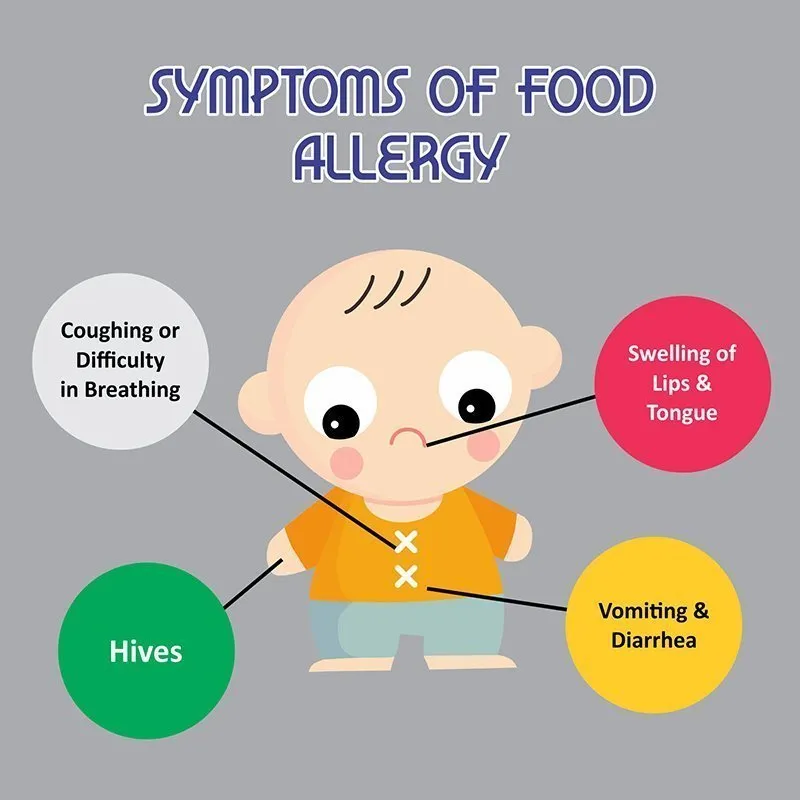 A positive test to a food only shows that your child might be sensitive to that food.
A positive test to a food only shows that your child might be sensitive to that food. - Blood tests to check the blood for IgE antibodies to specific foods
Remember, just because a baby’s initial allergic reaction to a new food may be mild, it may get worse upon following exposures. Talk to your pediatrician about any food allergy symptoms in your baby.
Some allergies go away with time. Egg and milk allergies often go away as children get older, but peanut, tree nut, and shellfish allergies tend to persist. That said, research shows that in the case of peanut allergies, peanut immunotherapy drops administered under the tongue are safe and effective as treatment for peanut allergy, even in children as young as 1. They were also found to help significantly desensitize the patients to peanuts.
The Family Food-Allergy Connection
If there is a family food allergies, your baby has an increased risk of also developing allergies, although it is not a certainty. If you have the allergies, the odds are 50-50 for them to have them as well.
If you have the allergies, the odds are 50-50 for them to have them as well.
It’s best to introduce the 8 allergens gradually, at one-to-two week intervals over time so that you can recognize if an allergy develops.
Protecting Baby Against Food Allergies: Easy Does It
In a reversal of earlier policy, the American Academy of Pediatrics is now recommending that potential allergens be introduced to your infant earlier rather than later. In doing so, the move may actually help prevent them from developing allergies to those foods.
Breastfeeding you baby for 4-6 months is the best way to prevent a milk allergy. Remember that breast milk or formula is higher in nutrition. When you begin to introduce whole milk, you should do so under a doctor’s supervision. Yogurt and soft cheeses are fine, because the proteins in these dairy products are broken down and less likely to cause tummy trouble.
The AAP now advises that, in the case of infants who are at high risk of allergies, peanuts should be introduced between 4-6 months.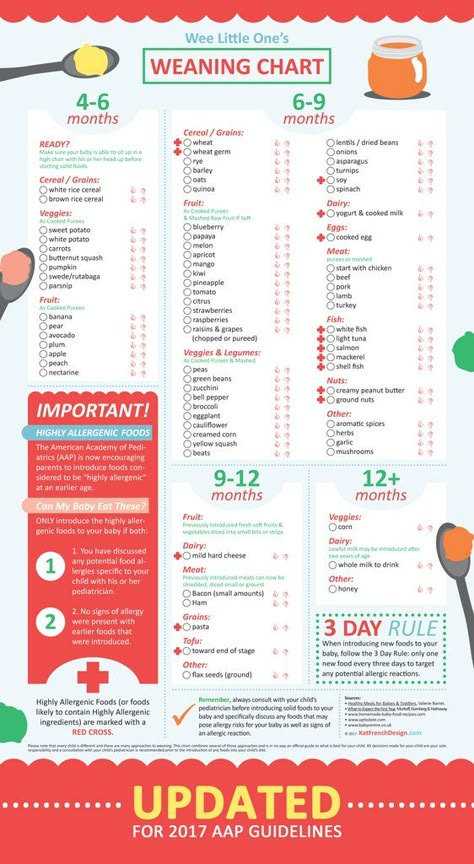 Infants at highest risk of developing peanut allergies are those with eczema or egg allergies or both. It was originally believed that introducing your baby to the foods when they are older might make any reactions more manageable.
Infants at highest risk of developing peanut allergies are those with eczema or egg allergies or both. It was originally believed that introducing your baby to the foods when they are older might make any reactions more manageable.
Other potential allergens such as tree nuts and fish should be introduced over a period of time as you introduce your baby to solid foods, between 6 and 9 months
You should wait until at least age 1 (some experts say age 2) to introduce honey, which can cause a potentially serious disease called infant botulism. Ask your pediatrician for guidance.
Food Allergies in Children | Johns Hopkins Medicine
What is food allergy?
A food allergy is an abnormal response of the body to a certain food. It is important to know that this is different than a food intolerance, which does not affect the immune system, although some of the same symptoms may be present.
What causes food allergy?
Before having a food allergy reaction, a sensitive child must have been exposed to the food at least once before, or could also be sensitized through breast milk.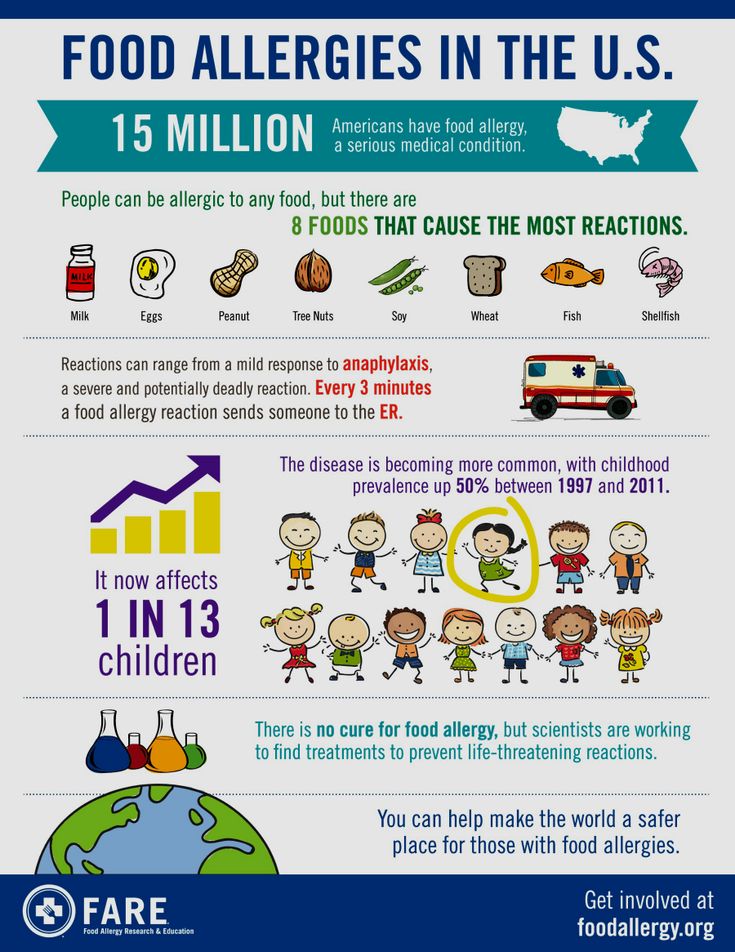 It is the second time your child eats the food that the allergic symptoms happen. At that time, when IgE antibodies react with the food, histamines are released, which can cause your child to experience hives, asthma, itching in the mouth, trouble breathing, stomach pains, vomiting, and/or diarrhea.
It is the second time your child eats the food that the allergic symptoms happen. At that time, when IgE antibodies react with the food, histamines are released, which can cause your child to experience hives, asthma, itching in the mouth, trouble breathing, stomach pains, vomiting, and/or diarrhea.
What is the difference between food allergy and food intolerance?
Food allergy causes an immune system response, causing symptoms in your child that range from uncomfortable to life-threatening. Food intolerance does not affect the immune system, although some symptoms may be the same as in food allergy.
What foods most often cause food allergy?
Approximately 90 percent of all food allergies are caused by the following eight foods:
-
Milk
-
Eggs
-
Wheat
-
Soy
-
Tree nuts
-
Peanuts
-
Fish
-
Shellfish
Eggs, milk, and peanuts are the most common causes of food allergies in children, with wheat, soy, and tree nuts also included. Peanuts, tree nuts, fish, and shellfish commonly cause the most severe reactions. Nearly 5 percent of children under the age of five years have food allergies. From 1997 to 2007, the prevalence of reported food allergy increased 18 percent among children under age 18 years. Although most children "outgrow" their allergies, allergy to peanuts, tree nuts, fish, and shellfish may be lifelong.
Peanuts, tree nuts, fish, and shellfish commonly cause the most severe reactions. Nearly 5 percent of children under the age of five years have food allergies. From 1997 to 2007, the prevalence of reported food allergy increased 18 percent among children under age 18 years. Although most children "outgrow" their allergies, allergy to peanuts, tree nuts, fish, and shellfish may be lifelong.
What are the symptoms of food allergy?
Allergic symptoms may begin within minutes to an hour after ingesting the food. The following are the most common symptoms of food allergy. However, each child may experience symptoms differently. Symptoms may include:
-
Vomiting
-
Diarrhea
-
Cramps
-
Hives
-
Swelling
-
Eczema
-
Itching or swelling of the lips, tongue, or mouth
-
Itching or tightness in the throat
-
Difficulty breathing
-
Wheezing
-
Lowered blood pressure
According to the National Institute of Allergy and Infectious Disease, it does not take much of the food to cause a severe reaction in highly allergic people.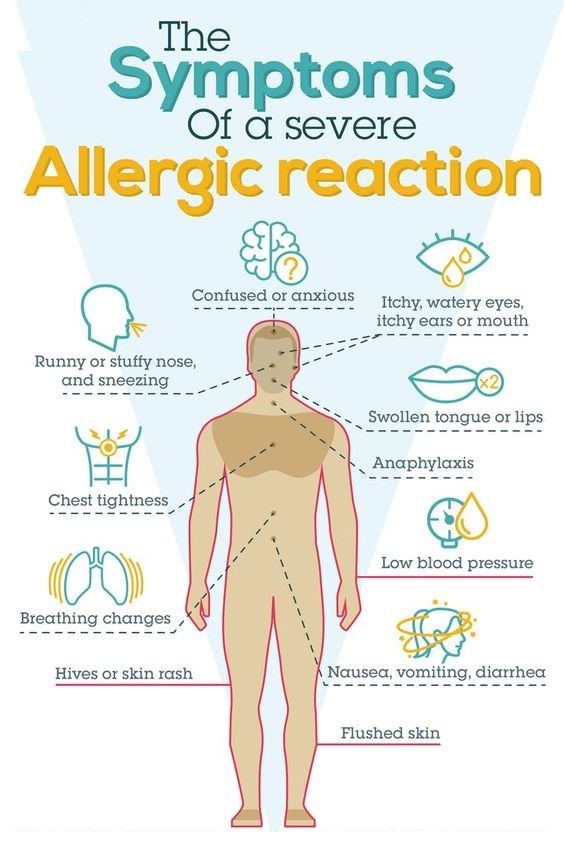 In fact, as little as 1/44,000 of a peanut kernel can cause an allergic reaction for severely allergic individuals.
In fact, as little as 1/44,000 of a peanut kernel can cause an allergic reaction for severely allergic individuals.
The symptoms of food allergy may resemble other problems or medical conditions. Always consult your child's doctor for a diagnosis.
Treatment for food allergy
There is no medication to prevent food allergy. The goal of treatment is to avoid the foods that cause the symptoms. After seeing your child's doctor and finding foods to which your child is allergic, it is very important to avoid these foods and other similar foods in that food group. If you are breastfeeding your child, it is important to avoid foods in your diet to which your child is allergic. Small amounts of the food allergen may be transmitted to your child through your breast milk and cause a reaction.
It is also important to give vitamins and minerals to your child if he or she is unable to eat certain foods. Discuss this with your child's doctor.
For children who have had a severe food reaction, your child's health care provider may prescribe an emergency kit that contains epinephrine, which helps stop the symptoms of severe reactions.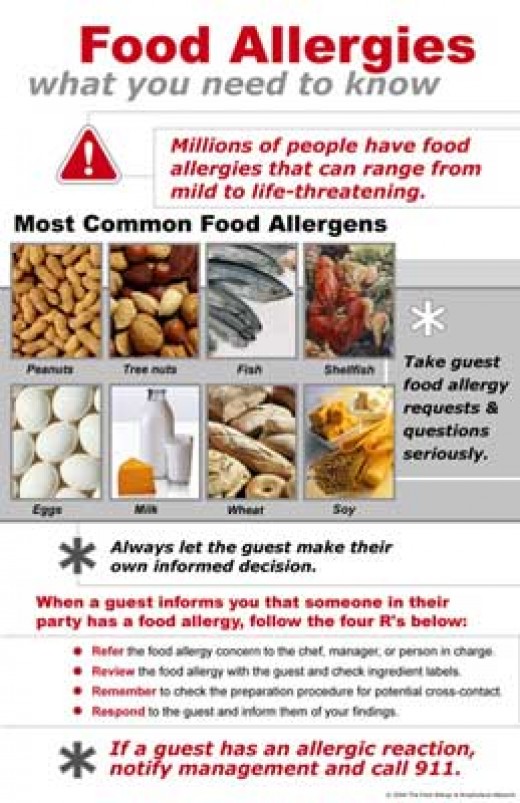 Consult your child's doctor for further information.
Consult your child's doctor for further information.
Some children, under the direction of his or her health care provider, may be given certain foods again after three to six months to see if he or she has outgrown the allergy. Many allergies may be short-term in children and the food may be tolerated after the age of 3 or 4.
Milk and soy allergy
Allergies to milk and soy are usually seen in infants and young children. Often, these symptoms are unlike the symptoms of other allergies, but, rather, may include the following:
Often, your child's doctor will change your baby's formula to a soy formula or breast milk if it is thought he or she is allergic to milk. If your child has problems with soy formula, your child's health care provider might change him or her to an easily digested hypoallergenic formula.
The symptoms of a milk or soy allergy may resemble other problems or medical conditions. Always consult your child's doctor for a diagnosis.
Prevention of food allergies
The development of food allergies cannot be prevented, but can often be delayed in infants by following these recommendations:
-
If possible, breastfeed your infant for the first six months.
-
Do not give solid foods until your child is 6 months of age or older.
-
Avoid cow's milk, wheat, eggs, peanuts, and fish during your child's first year of life.
Dining out with food allergies
If your child has one or more food allergies, dining out can be a challenge. However, it is possible to have a healthy and satisfying dining-out experience; it just takes some preparation and persistence on your part.
The American Dietetics Association offers these tips for dealing with food allergies when your family is eating away from home:
-
Know what ingredients are in the foods at the restaurant where you plan to eat.
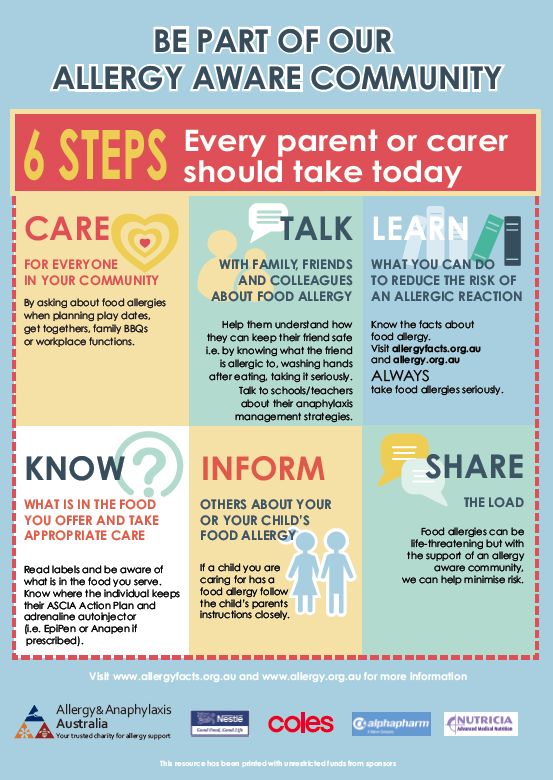 When possible, obtain a menu from the restaurant ahead of time and review the menu items.
When possible, obtain a menu from the restaurant ahead of time and review the menu items. -
Let your server know from the beginning about your child's food allergy. He or she should know how each dish is prepared and what ingredients are used. Ask about preparation and ingredients before you order. If your server does not know this information or seems unsure of it, ask to speak to the manager or the chef.
-
Avoid buffet-style or family-style service, as there may be cross-contamination of foods from using the same utensils for different dishes.
-
Avoid fried foods, as the same oil may be used to fry several different foods.
Another strategy for dining out with food allergies is to give your server or the manager a food allergy card. A food allergy card contains information about the specific items your child is allergic to, along with additional information, such as a reminder to make sure all utensils and equipment used to prepare your meal is thoroughly cleaned prior to use.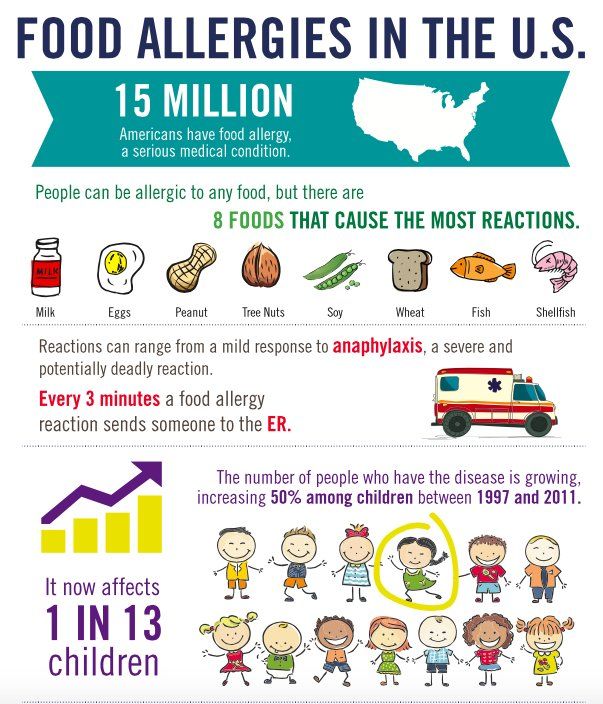 You can easily print these cards yourself using a computer and printer. If your child is eating out with friends and you are not going to be present, give your child a food allergy card (or make sure the adult in charge has one) to give to the server.
You can easily print these cards yourself using a computer and printer. If your child is eating out with friends and you are not going to be present, give your child a food allergy card (or make sure the adult in charge has one) to give to the server.
Alternately, there are several types of allergy cards available on the internet that can be customized with your child's personal information. One example is the Food Allergy Buddy Dining Card, promoted by the National Restaurant Association.
The Food Allergy Initiative, in conjunction with the National Restaurant Association and the Food Allergy and Anaphylaxis Network, has developed the Food Allergy Training Program for Restaurants and Food Services. This training program was developed to help restaurants and other food service outlets to ensure their customers, including those with food allergies, will receive a safe meal prepared to customer specifications.
Allergy Child Diet - Allergy and Asthma Treatment at Allergomed
The birth of a child is a joy for every family and, of course, parents want their child to grow up healthy, especially those who themselves suffer from allergic diseases.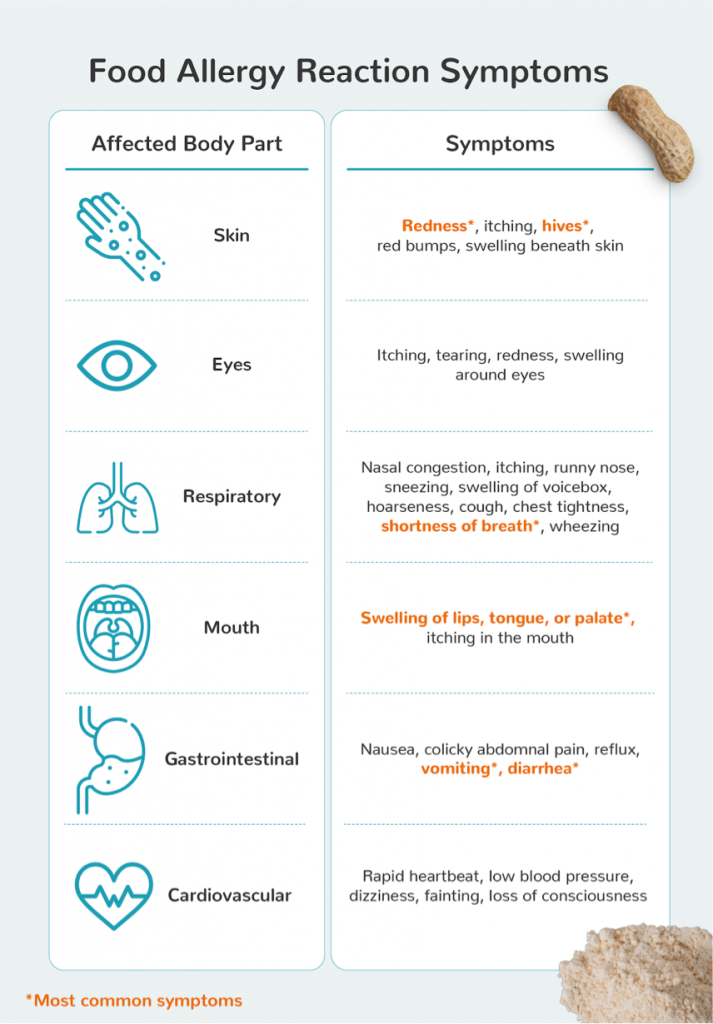
BREASTFEEDING
Breastfeeding is essential to keep your baby less sick. What gives breastfeeding? It not only improves bowel function, forms the correct bite, protects against infectious diseases, but also strengthens the emotional bond between mother and child. nine0003
When a mother is breastfeeding, she must follow certain nutritional rules: exclude milk, replacing it with sour dairy products, and limit the consumption of chicken, fish, citrus fruits, nuts, cocoa coffee, because these products most often cause allergies. If the baby gains enough weight while breastfeeding, then the first complementary foods can be introduced at 6 months.
With a decrease in mother's milk, it is better to use non-traditional methods of treatment: homeopathy and reflexology. nine0003
FORMULA FEEDING
Formula-fed infants must receive formula. If the baby did not have any manifestations of allergies, then hypoallergenic mixtures are used (Humana, Nan GA, Hip GA), in the presence of allergic manifestations, the so-called hydrolysates (Alfare, Nutramigen, Pregestemil).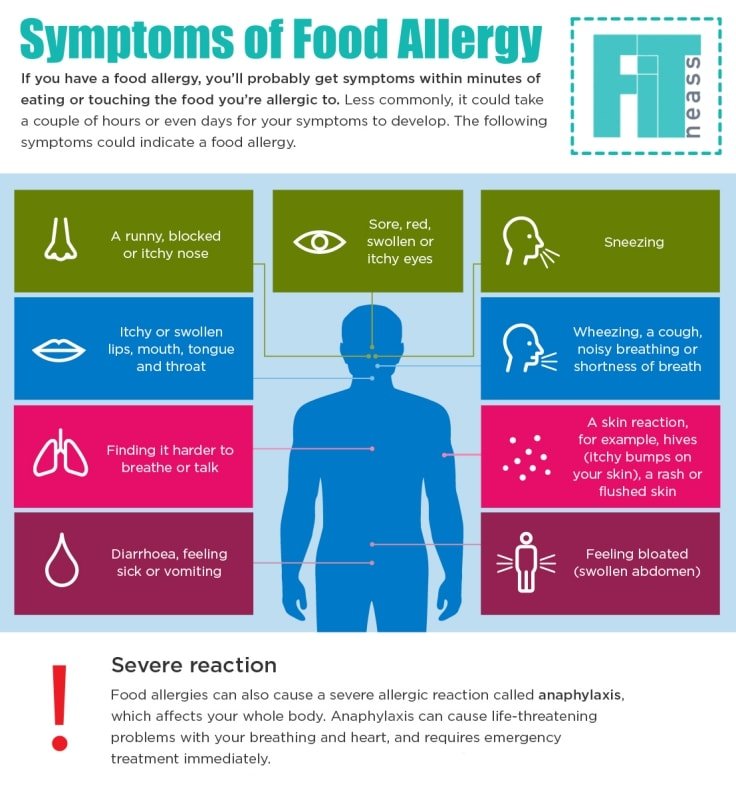 Allergic reactions are caused by proteins.
Allergic reactions are caused by proteins.
In special mixtures, they are broken down into smaller components that no longer cause allergies. Parents need to remember that the new mixture is introduced gradually, adding 20 ml to each feeding. Thus, the introduction of a new mixture will take 5-7 days. nine0003
In recent years, soy allergy has become more common. Since soy inclusions are included in many products, soy mixtures are not recommended as substitutes for women's milk during artificial feeding.
Recently, a lot of various canned baby food has appeared. When choosing canned food for your baby, pay attention that green apple juice is included as a natural preservative, and not ascorbic acid or lemon juice.
PREVENTION OF FOOD ALLERGIES
In children of the first year of life, cow's milk, chicken egg (protein), fish and cereals (wheat, corn, barley, less often rice and buckwheat) cause allergies more often. For the prevention of food allergies in children under 1 year of age, cow's milk is excluded, up to 1.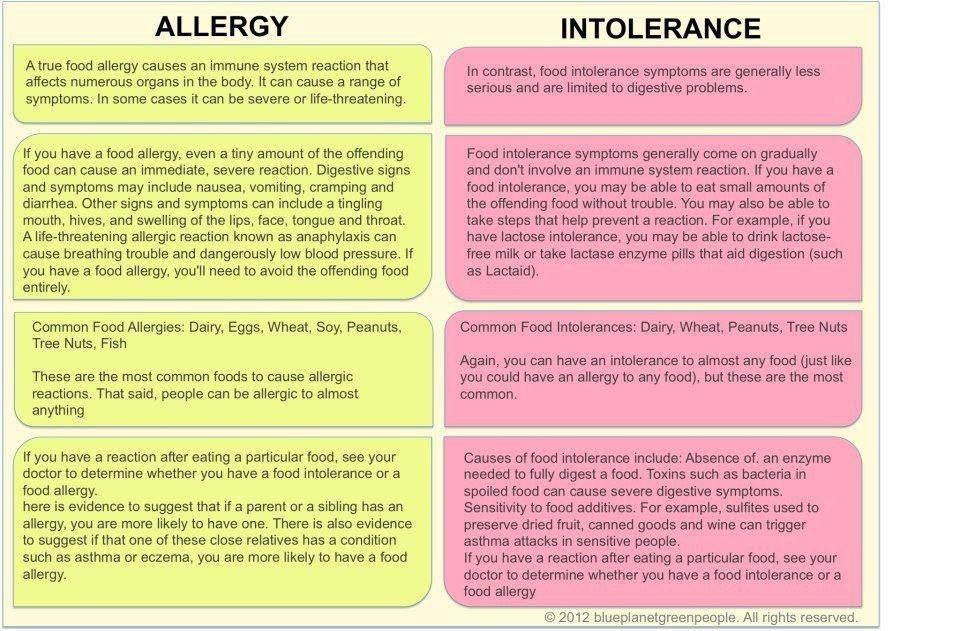 5 years - chicken eggs, fish and seafood, up to 3 years of age - nuts.
5 years - chicken eggs, fish and seafood, up to 3 years of age - nuts.
It should be noted that children do not have “accumulation allergies”, after using the “guilty product”, allergy manifestations develop within a few minutes up to 4-5 hours. nine0003
FOOD FOR OLDER CHILDREN
Older children should also follow certain dietary guidelines.
All food products can be conditionally divided into three groups according to allergenicity: high, medium and low degree
- First - (high degree of allergenicity): eggs, fish, seafood, caviar, wheat, rye, carrots, tomatoes, celery , bell pepper, wild strawberry, strawberry, raspberry, citrus, kiwi, pineapple, mango, coffee, cocoa, chocolate, mushrooms, nuts, honey, pomegranate, persimmon, melon; nine0044
- Second - (moderately allergic): whole milk, butter, beef, chicken meat, buckwheat, oatmeal, potatoes, beets, peas, soybeans, apricots, peaches, cranberries, bananas, dark red cherries, rose hips , blueberries, lingonberries, black currants;
- Third - (low allergenicity): sour - dairy products, horse meat, rabbit meat, lean pork, lean lamb, pearl barley, millet, refined vegetable oil, green varieties of apples and pears, white and red currants, yellow and white cherries, yellow varieties of plums, gooseberries, zucchini, squash, cucumbers, cabbage, corn, parsley, dill; nine0044
Despite the conditional division of products into degrees of allergenicity, it is recommended to start expanding the child's diet with products of the third group, gradually adding products from the second group and lastly from the first. Parents should be careful and exclude exactly those products that caused an allergic reaction. It must be remembered that the diet can not permanent. With age, the child's diet should be expanded.
Parents should be careful and exclude exactly those products that caused an allergic reaction. It must be remembered that the diet can not permanent. With age, the child's diet should be expanded.
It must be emphasized that products such as chocolate, fish, citrus fruits, strawberries, egg white, tomatoes, when used, can cause the formation of active substances that cause allergic reactions. The composition of a number of products, such as soy, spinach, Gouda cheese, Cheddar, canned food, tomatoes, corned beef, sauerkraut, tuna, mackerel, includes histamine - the main "culprit" of allergic reactions. nine0003
Some foods should be completely excluded from the diet of a child with an allergy, regardless of age: chewing sweets and gums, sauces, fruit juices, soft drinks, instant soups, confectionery, yogurt, jams, ice cream if they contain industrial dye - tartrazine (E 102).
Parents often try to adjust the child's diet on their own and their views on this problem are completely opposite.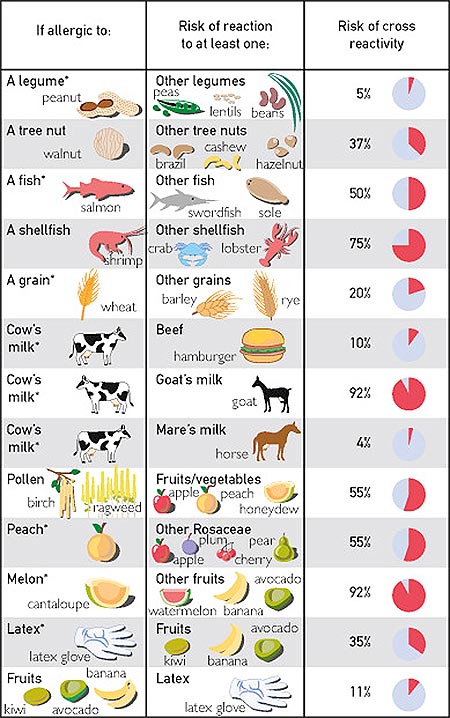
Some of the parents believe that the child should be on the strictest diet, leaving the child literally "on water and cabbage." At the same time, they do not take into account the fact that a child is a growing organism, therefore he needs “building materials” for normal growth and development, as well as the fact that with age the list of “forbidden foods” decreases. So, for example, milk allergy is most typical for children under 1.5 years old. If at an older age the child has any health problems when drinking milk and dairy products, this is most likely a gastroenterological disease and further dietary correction should be discussed with a gastroenterologist. nine0003
Some parents, on the contrary, allow the child to eat literally everything, citing pity for the child. Of course, if the doctor recommends excluding any products from the diet, they should not be on the general table so as not to cause the child to feel “inferiority”, but strict adherence to the diet should be mandatory at a certain stage of treatment.
What is it for? So that in the future allergic skin lesions do not degenerate into more serious diseases, such as, for example, bronchial asthma. nine0003
At the appointment, parents often ask: “Will an allergy develop if the child is given all the foods in a small amount?”. An allergic reaction occurs when even an extremely small amount of the “guilty allergen” is consumed. If a child is prone to overeating, then exacerbations of the disease are not always allergic in nature.
THEREFORE, THE CHILD'S DIET SHOULD BE SELECTED STRICTLY INDIVIDUALLY AFTER A CAREFUL ALLERGOLOGICAL EXAMINATION AND CONSULTATION BY A DOCTOR - ALLERGIST. nine0014
Food allergies in children. How is it manifested and how to treat?
According to WHO, approximately 40% of the world's population has allergies in the 21st century. Mankind suffers from skin allergies, allergies to insect bites, to sunlight and cold. However, the “leader” of the rating is food allergies. And most of all, she worries children - both babies and older kids, and teenagers.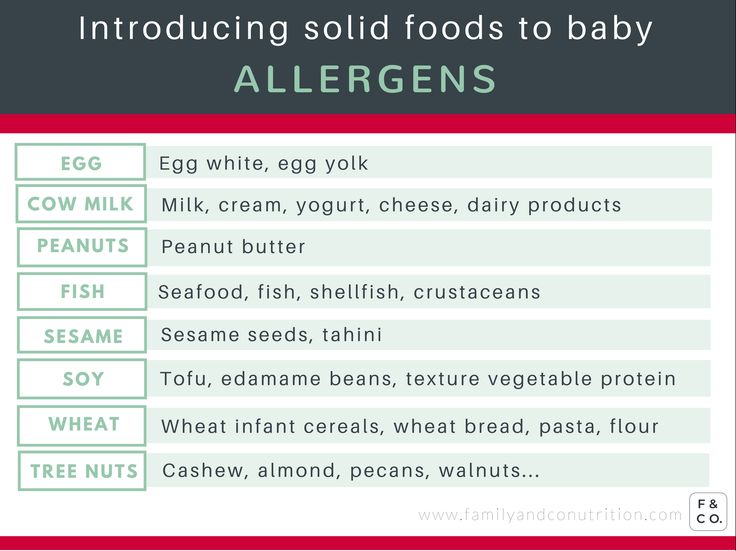
The disease only seems insignificant. She learned to "disguise" herself as other ailments, so not every parent is able to recognize her. How to get rid of allergies, we have already told. Today we will talk about food allergies. Why can one child eat everything without harm to health, while another completely harmless chocolate causes allergies? nine0003
What is a food allergy?
A child's food allergy is when the body reacts to one or more foods. During an allergy, the immune system accepts protein or other substances in food not as useful, but as very dangerous and harmful. Against the "enemy" immunity immediately builds protection by producing antibodies.
Each organism and immunity is individual, so it is very difficult to predict the child's reaction to the product. But some foods still cause a reaction more often than others. nine0003
From citrus fruits to dried apricots and plums - highly allergenic and low allergenic foods
Foods that cause allergies in a child are divided into highly allergenic, moderately allergenic and low allergenic foods.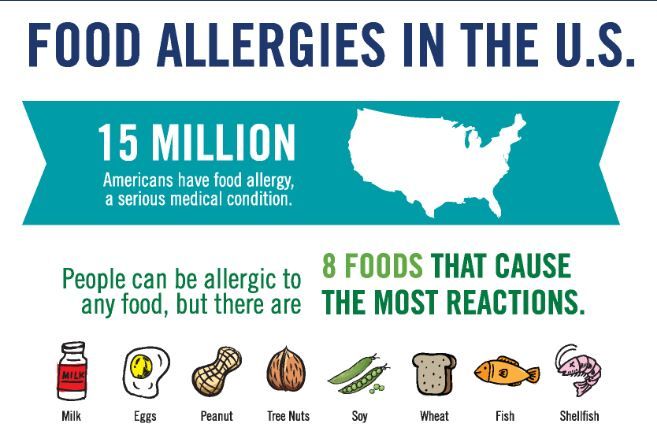 However, doctors remind: it is not at all necessary that oranges will cause a reaction, but pears will not. Each situation is purely individual.
However, doctors remind: it is not at all necessary that oranges will cause a reaction, but pears will not. Each situation is purely individual.
How does food allergy manifest itself in children? 3 main symptoms
Food allergy manifests itself differently in children of different ages. But parents should know the general symptoms of the disease: the child does not want anything, is naughty, sleeps poorly and anxiously at night, and suffers from lack of sleep during the day. nine0003
At the same time, the disease also has its own characteristic alarming "signals". Some appear more frequently, others less frequently. What are the 3 main signs of food allergies in children.
Skin reaction
Most food allergies in children are shown through redness. Pink dots, bubbles and red spots appear. The rash may continue with itching - from this the child sleeps and eats poorly.
Respiratory system
Food allergy in children manifests itself in the respiratory system through a runny nose and nasal congestion, pain and sore throat, cough.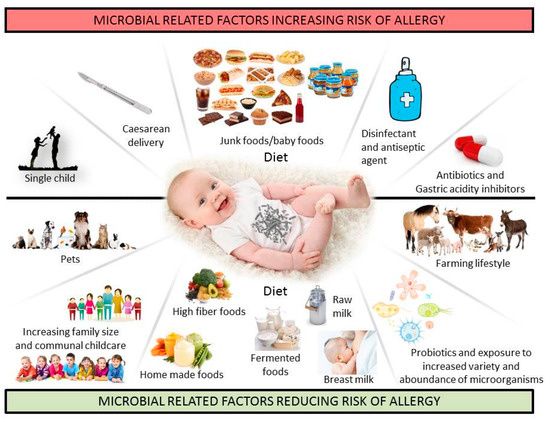 With a strong reaction, edema appears. This is a reason to urgently call an ambulance. nine0003
With a strong reaction, edema appears. This is a reason to urgently call an ambulance. nine0003
Gastrointestinal
Allergy disrupts the child's stomach and intestines. The baby is worried about colic, bloating. Older children feel sick and vomit, there is pain in the abdomen.
Food allergy in children. Looking for causes
Why do children develop food allergies? There are several reasons for the appearance of allergic reactions.
1. Immaturity of the child's digestive system
In babies, everything is just starting to work, so it is difficult for the body to cope with digesting proteins. Even small amounts of allergens can lead to a serious reaction. nine0003
2. Irrational introduction of complementary foods
Incorrect or early introduction of new foods into the baby's diet can cause allergies. Too much food can also cause an adverse reaction in the body. Therefore, everything new should be given to the baby one at a time, starting with one teaspoon.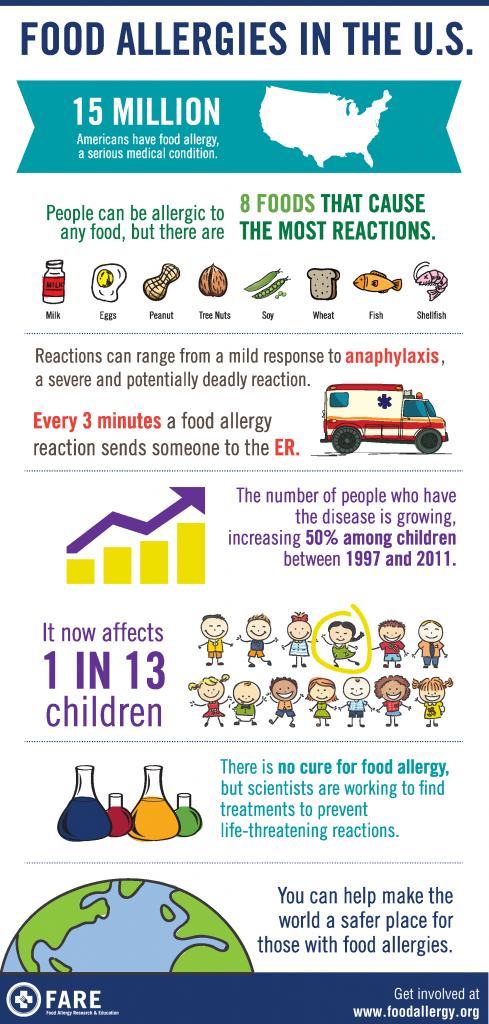
An allergy in a baby can manifest itself due to breast milk - if the mother has eaten a new or allergenic product the day before. But here, too, everything is individual. nine0003
3. Heredity
Food allergies in children sometimes manifest themselves due to unfavorable heredity. Parents suffer from allergies, and not necessarily food. The risk of developing this disease in a child increases significantly.
4. Ecology
Poor environmental ecology can also affect a child's allergies. These are air and air pollution, climate change, lack of landscaping in cities, the emergence of unnatural food and substitute products. nine0003
5. Bad habits
The risk of allergic reactions increases the presence of bad habits. We are talking about smoking, the use of alcohol or drugs, both by the child and the mother during gestation.
Treating food allergies
How to treat food allergies in a child? There are two types of therapy - diet and medication. The treatment program for each child is individual, it will be helped by a pediatrician and narrow specialists - a nutritionist and an allergist. nine0003
The treatment program for each child is individual, it will be helped by a pediatrician and narrow specialists - a nutritionist and an allergist. nine0003
Diet
Diet is very important in the treatment of food allergies in children. First, it is necessary, of course, to limit the child from the use of products that cause allergic reactions. Parents should not forget that the diet should be balanced. No need to give up foods rich in vitamins and nutrients.
If we are talking about a child who is breastfed, the mother needs to think over the diet.
Complementary foods, as we mentioned earlier, should be started gradually. If a child suffers from allergies, then highly allergenic foods - cow's milk, nuts, chicken eggs - doctors advise giving the baby only when he is two years old. nine0003
Medications
Doctors usually prescribe antihistamines and adsorbents to relieve food allergy symptoms in children. Creams and ointments will help get rid of redness and skin itching.